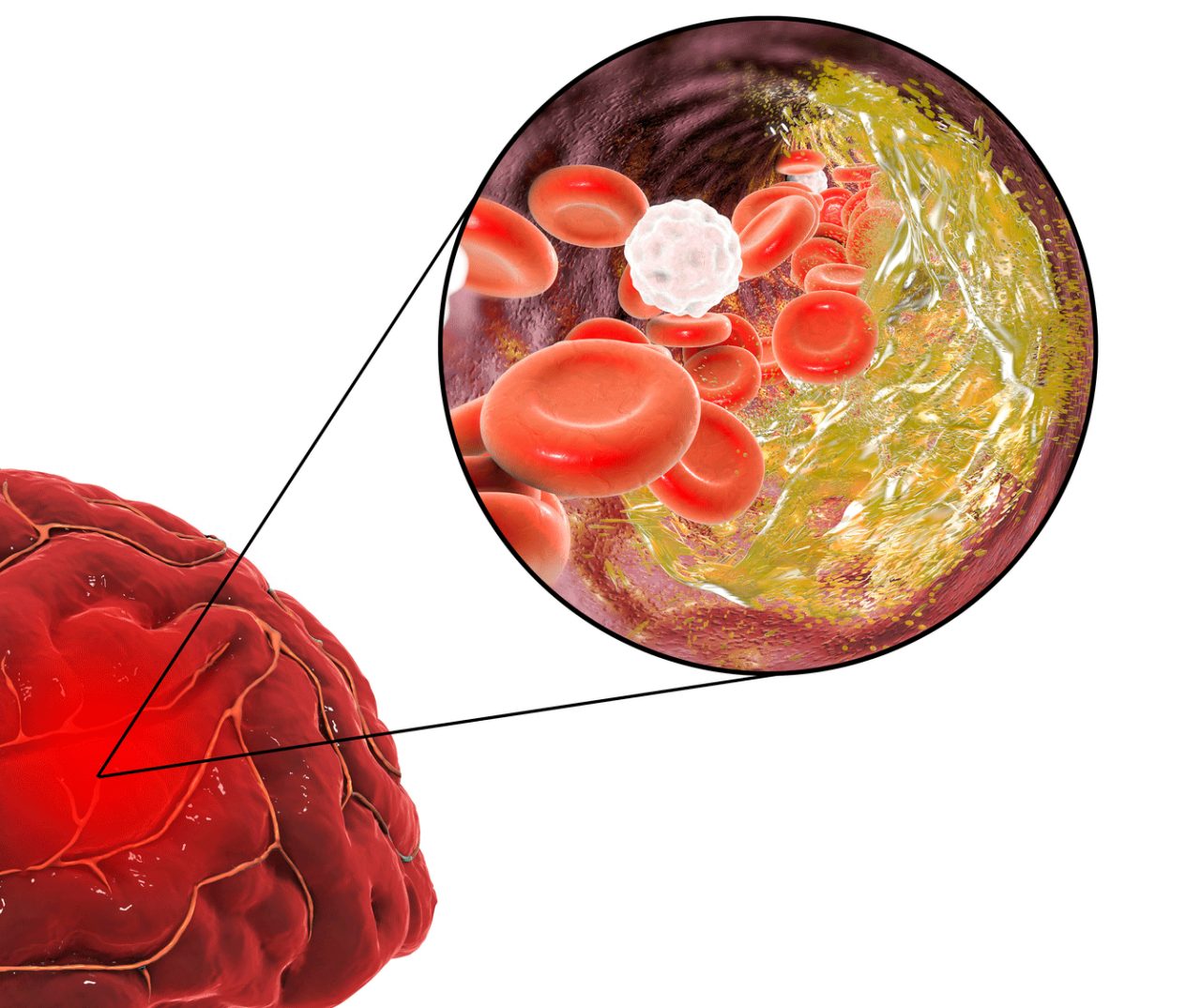What Is Ischemic Stroke?

Stroke is the 4th leading killer of U.S. adults. Learn what an ischemic stroke is and how to lower your risk of the most common type of “brain attack.
A stroke (or “brain attack") occurs when blood circulation to your brain is disrupted. There are two different types of strokes. Hemorrhagic stroke is caused by bleeding into the brain from a ruptured blood vessel; ischemic stroke results when the flow of oxygen-rich blood to the brain is blocked.
Every year, nearly 800,000 Americans have a stroke, and nearly 140,000 die from stroke-related causes. The majority of these brain attacks, 87 percent of them, are the ischemic type, according to the Centers for Disease Control and Prevention (CDC).
YOU MIGHT ALSO LIKE: 9 out of 10 Strokes Are Preventable
How ischemic strokes develop
To understand an ischemic stroke and what causes it, consider the ways blood flow can become blocked in your body.
Atherosclerosis, the plaque formed by excess cholesterol, other fats, and calcium, can accumulate enough to narrow arteries. It’s a main cause of both ischemic strokes and heart attacks.
The plaque build-up can result in several kinds of obstructions that lead to strokes, the American Stroke Association explains. For example, as blood flow is slowed in atherosclerosis-narrowed arteries, a cerebral thrombus (blood clot) can form within a blood vessel located in your brain or neck, resulting in an ischemic stroke. In addition, severe narrowing of an artery (stenosis) in, or leading to, your brain due to plaque can close off blood flow, producing an ischemic stroke.
If you’ve ever heard about a person suffering a stroke that was linked to a heart rhythm condition, you might wonder what is an ischemic stroke’s relationship to how your heart beats.
Here’s the explanation: A blood clot can develop in your heart, especially if you have atrial fibrillation, one of the most common types of arrhythmias (irregular heart rhythms). It causes your heart to beat faster than normal, and the blood pumping movement of your heart’s upper and lower chambers aren’t synchronized, according to the National Heart, Lung and Blood Institute (NHLBI).
The problem can cause blood to pool in your heart, increasing the risk of a blood clot that can break loose and travel to your brain, causing an ischemic stroke.
Get immediate help for stroke symptoms
If you have any of these signs of a possible stroke, don’t wait, the National Institute of Neurological Disorders and Stroke (NINDS) urges. Call 911.
- Sudden numbness or weakness in an arm, leg, or your face, especially on one side of your body
- Sudden dizziness or loss of coordination or balance
- Sudden confusion, difficulty speaking, or understanding what others say
- Sudden trouble seeing in one or both eyes
- Sudden trouble walking, dizziness, or a loss of balance or coordination
- Sudden severe headache with no known cause
Even if these warning sign of a stroke disappear quickly, they may be “mini-strokes,” or TIAs (transient ischemic attacks), and should prompt medical care to help prevent future full-blown strokes.
Ischemic stroke treatment
Strokes not only kill; they are the most common cause of adult disability in the U.S. The damage ischemic strokes cause is due to brain cells dying from decreased blood flow and the resulting lack of oxygen. That’s why getting help immediately for stroke symptoms is crucial.
If you are treated within three hours of the first ischemic stroke symptoms, you will likely receive treatment with a thrombolytic (a “clot-busting” drug) to break up blood clots and lessen your chances of death or disability, the CDC explains.
Researchers found patients given tissue plasminogen activator (or tPA), a thrombolytic drug used to treat ischemic stroke, are more likely to recover fully or have less disability than patients who do not receive the drug. They are also less likely to need long-term care. This is why it is crucial to call 911 or go to the emergency room ASAP to be within the three-hour window for better treatment outcomes.
How to lower your risk factors for ischemic stroke
You can lower your risk for ischemic stroke, the NINDS points out.
High blood pressure is at the top of the list for stroke risk factors. If you have hypertension, work with your doctor to lower your blood pressure and take medication as prescribed. Regular exercise, getting weight under control, and eating a healthy diet rich in vegetables, fruit, and whole grains can help.
If you smoke, get help to kick the habit for good. Cigarette smoking doubles your risk of an ischemic stroke.
Pay attention to your heart health. If you are diagnosed with atrial fibrillation, cardiovascular disease, or any other heart problems, follow up with your doctor about treatment. Medications to prevent blood clots are especially important for people with atrial fibrillation.
Updated:
March 22, 2023
Reviewed By:
Janet O’Dell, RN